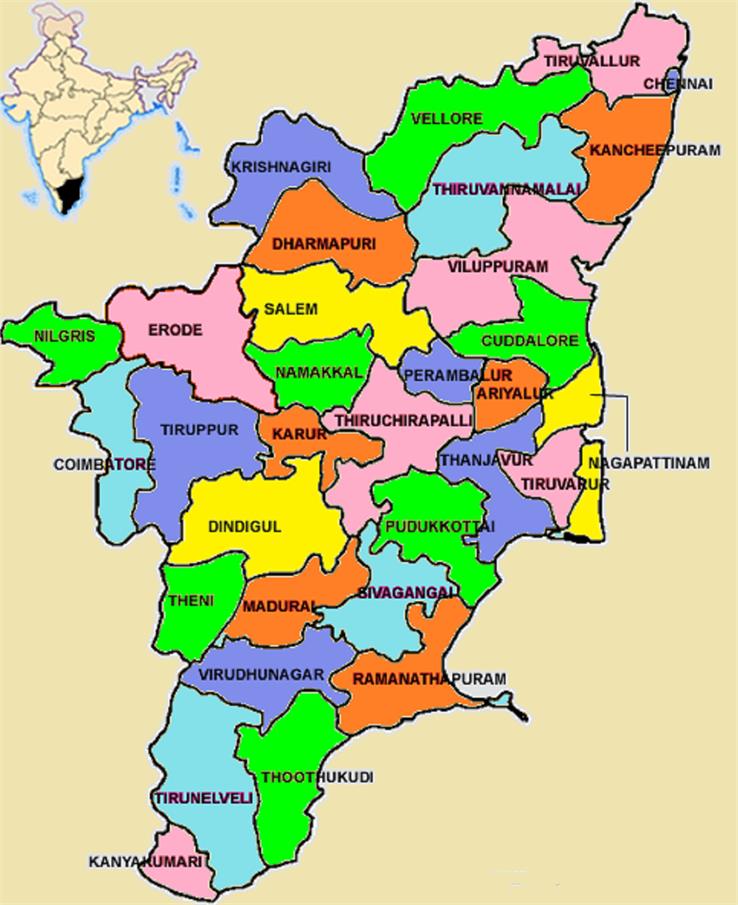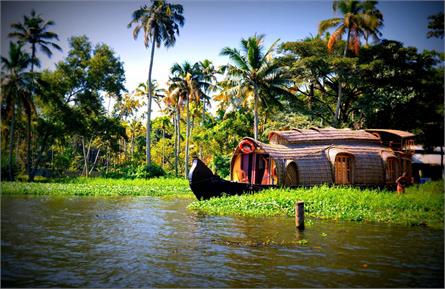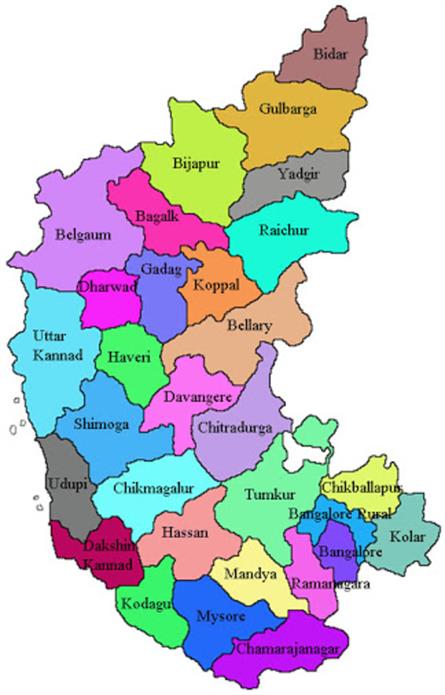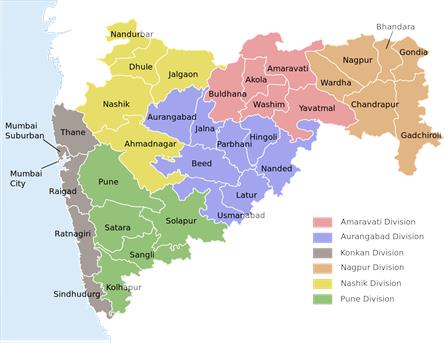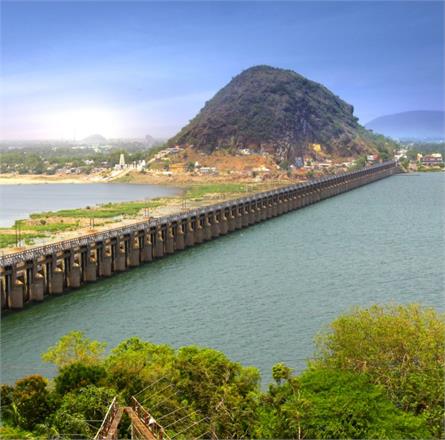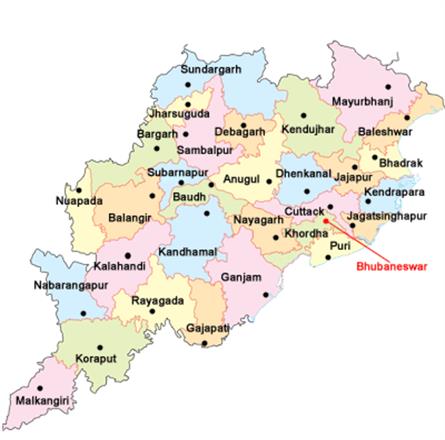Tamil Nadu - A land of Pilgrimage Sites
Located in the southern part of India, Tamil Nadu is one of the most famous and beautiful states in the nation. Tourists can see the perfect blend of culture, religion, simplicity, and a modern lifestyle.
Tamil Nadu is bordered by Andhra Pradesh, Kerala, and Karnataka and located in the southernmost part of the Indian subcontinent. The Indian Ocean towards the south and Bay of Bengal towards the east are two water bodies near the state. Geometrically, Tamil Nadu touches the southern tip of the Indian peninsula. The total area of the state is 1,30,058 square kilometers. Chennai, formerly Madras, is the capital of Tamil Nadu, also the fourth largest city in the whole country, with its total area 426 sq km. The beautiful coastline, majestic temples, towering coconut trees, wild sanctuaries, and cultural heritage make Tamil Nadu the paradise on the land of India.
How Tamil Nadu derive its name?
The word Tamil Nadu is derived from the Tamil language, which literally means home or residence. It denotes the home of the Tamil or the country of the Tamils. The province was part of the Madras Presidency during the British rule. After independence, the Madras Presidency was divided into several sections, resulting in the rise of Madras and other states. In 1969, the Madras Province was renamed Tamil Nadu by C.N. Annadurai, Chief Minister.
Best Places to visit in Tamil Nadu
A land of temples and pilgrimage sites, Tamil Nadu, is one of the beautiful places in India for tourists or pilgrims to visit. Many tourists visit Tamil Nadu to see the wonderful town of Kanyakumari, the incredible hill station of Ooty or famous Meenakshi Temple. From hill stations to beaches, pilgrimage sites, and historical places, it has everything to explore.
Ooty
Ooty, a prominent tourist destination place, is also known as the ‘Queen of the Hills.’ The East India Company was once headquartered here. Ooty Toy Train shows panoramic views of the beautiful hill station. The Nilgiri Mountain Railway has the steepest track in Asia and is one of the best train rides one will ever get to experience.
Yercaud
Yercaud, 'Poor man's Ooty,' is a beautiful small hill station in Salem district of Tamil Nadu. Nestled wonderfully in the Eastern Ghats, it has hundreds of spots that attract tourists. One can capture the best pictures of sunset and sunrise from this beautiful hill station.
Mahabalipuram
Mahabalipuram, also known as Mamallapuram, is a historical tourist spot, which is famous for rock-cut caves, and intricately carved temples. It is located on the Coromandel Coast along the Bay of Bengal in the state. Some of the famous tourist destinations include the Shore Temple, a UNESCO World Heritage Site, and the Pancha Rathas, Crocodile Bank, which is home to some of the best species of crocodiles and the beaches.
Chennai
Chennai, formerly Madras, is the fourth largest city in the country and is one of the most popular tourist attractions in South India. Chennai is a city with a rich cultural history, perfectly balancing its heritage with modern lifestyles. Chennai has the second largest beach in the world, i.e., Marina beach. Moreover, St George Fort is one of the first British establishments in the country.
Kanchipuram
Kanchipuram, 'golden city of a thousand temples,' is known for its beautiful Kanchipuram sarees. Kanchipuram is a popular tourist attraction in Tamil Nadu. It is mainly known for being a culture and philosophical center. The city is home to the famous Kamakshi Amman Temple, which is the consort of Lord Shiva. Kailasanathar Temple is also popular and is known for its magnificent architecture. Ekambareswarar Temple is the tallest, largest, and most impressive temple in the city, which is spread across 40 acres.
Kanyakumari
Kanyakumari, earlier known as Cape Comorin, is a coastal city in the state of Tamil Nadu and is a place of great religious importance due to its existence since the Sangam period. Kanyakumari is surrounded by beaches, coconut trees, mountains, and paddy fields. Kanyakumari is a mesmerizing place, where one can enjoy the glimpse of dawn and dusk on the same beach.
Coimbatore
One of the largest cities in Tamil Nadu, Coimbatore, is a major textile, industry, and manufacturing center of the state. The most famous temples in the city include Arulmigu Eachanari Vinayagar Temple, Marudhamalai (temple), and Thirumoorthy Malai Temple. Many of these temples are located in hilly areas.
Madurai
Constructed in the form of Lotus, Madurai is one of the oldest cities in India, located in Tamil Nadu. The Pandya dynasty ruled the city for a long time, and it is considered the cultural capital of Tamil Nadu. The city has a Meenakshi temple, dedicated to the goddess Meenakshi. The Gandhi Museum houses Gandhi's dhoti soaked in blood and some other artifacts. Madurai is popular for its finger-licking street food.
Kodaikanal
Kodaikanal is one of the most famous honeymoon destinations in India, which is located in the state of Tamil Nadu. The literary meaning of Kodaikanal is ‘gift of forests,’ which is situated at an altitude of 7200 feet above sea level. While considering its beauty, Kodaikanal is renowned as the princess of hill stations.
Cultural Life
Hinduism remains the center of culture despite attempts by Brahmin caste priests to break religious and political domination. The temple festival-cycle attracts devotees. Hindu families are associated with major institutions or monasteries of various faiths. The most important is the Shankar Math of Kumbakonam.
Tamil people have a great interest in dance, music, and literature. Bharatanatyam and many types of music, including Carnatic music, have prospered over the centuries. A unique festival of Carnatic music is also held in Thiruvarur which is the birthplace of singer and poet Tyagaraja, in January every year.
Famous things to buy in Tamil Nadu
Shopping in Tamil Nadu may become the memorable moment of one's trip. The state is extremely rich in art and wooden crafts. Tamil Nadu is one of the leading textile manufacturing states in India. Silk sarees, Cotton Dhoti, are the most popular items for shopping. Thanjavur, Coimbatore, and Kanchipuram are famous worldwide for their Kanchipuram silk sarees. One can buy beautiful stone sculptures from Mahabalipuram.
Musical instruments are the second most important item to purchase from Tamil Nadu. Especially high-quality instruments associated with classical music are found here. Statues and crafts cast in brass and bronze will tempt you for shopping. Pottery, stone carving items, Tanjore Paintings, and metalwork items are also famous. Tamil is considered as the major producer of gold, silver, and diamond jewelry. It is also known for its freakish and luxurious designs, as well as filigree artwork.
What are the Famous Foods of Tamil Nadu?
The lip-smacking cuisine of Tamil Nadu includes various famous vegetarian and non-vegetarian dishes. Curry leaves, cinnamon, cloves, ginger, garlic are used in the main diet along with rice, lentils, legumes. Coconut is used in various forms in the food.
Food and delicacies are served on a banana leaf, and a typical diet consists of sambar (curry), yogurt, two types of vegetables, rice, and pickle. People usually sit on the floor to have food. The lip-smacking cuisine is identified with the cuisines like Dosa, idli, upma, parotta, sambar, rasam. The sweet dishes of the state include Payasam, Kesari bat. Filter coffee is a specialty among South-Indian drinks and beverages.
Festivals in Tamil Nadu
Festivals are a part of the everyday life of Tamil Nadu. The major festivals of Tamil Nadu convey the culture, traditions, and customs of the state. It is a religious state that welcomes its festivals with great pomp. Major festivals in Tamil Nadu are related to farming, which are celebrated on the occasion of crop sowing and harvesting. Some of them are:
- Pongal, the harvesting festival, is celebrated in the month of January. Farmers worship the sun, earth, and animals to show their gratitude for their good harvest. Pongal is followed by 'Jallikattu' (Tamil Nadu style bull fight) in some parts of South Tamil Nadu.
- Chithirai is another famous festival in the city of Madurai, celebrated in April.
- The Aadi Perukku festival is celebrated on the eighteenth day of Tamil month 'Adi' on the banks of rivers.
- Nritya Mahotsav 'Mamallapuram' is a wonderful festival. The ancient city of Mamallapuram, adjoining the beach, has an open platform of rock-cut pillars dating back to 13 centuries by the Pallava kings, on which Bharatanatyam, Kuchipudi, Kathakali, and Odissi dances are performed by the best and well-known artists of Nrityakala.
- In the 'Natyanjali' dance festival, residents of the town of Chidambaram pay special tribute to Lord Nataraja, who created the dance. Due to which, Lord Nataraja is considered as a god of dance.
- Thaipusam is a major festival in the state of Tamil Nadu, which is celebrated as the birthday of Subramanya, the younger son of Lord Shiva. According to the Tamil calendar, this festival is organized on the full moon day of the Thai month.
- Thiruvaiyaru Festival is celebrated on the Pushya Bahula Panchami in the month of January every year in Thanjavur district in the state of Tamil Nadu. The festival is organized in honor of a famous composer and saint Tyagaraja.
- Karthigai Deepam is a major festival in the state of Tamil Nadu, which is also known as the Festival of Lights. The festival is organized between November and December to connect the Moon with the constellation Karthigai. The main purpose of this festival is to remove evils from life and to hold on to the good.
Jallikattu Bull Festival, Ganesh Chaturthi, Navaratri, Diwali, Basant Panchami or Saraswati Festival, and Chitri Rai Festival are other festivals celebrated in Tamil Nadu with great pomp and grandeur.
History
Formerly known as 'Tamilakam' or 'Thamizhagam,' the ancient history of Tamil Nadu is around 6,000 years old. It is said that this area was inhabited before the Indus Valley Civilization. The history of Tamil Nadu has been divided into three parts by Historians, i.e., Ancient, Middle, and Modern. Being the oldest civilization, some people believe that the Dravidians had to come south due to Aryans, who ruled the north. Also, It is considered the origin of Dravidians. Many dynasties have ruled the state ranging from the Cholas, Pallavas, and Pandyas. The glorious history is divided into the ancient and middle ages. Chola kings regained their valor in the ninth century after ruling for years in the fourth century and fought many battles with the kings of that time. After several attacks, Muslim monarchs won major parts of South India in the 14th century.
Geography
Tamil Nadu is naturally divided between the flat regions on the east coast and the hilly areas in the north and west. Important rivers of the state include Kaveri, Ponnaiyar, Palar, Vaigai, and Thamirabarani, all of which flow eastward from the hills. Kaveri and its tributaries are an important source of water and electricity in Tamil Nadu. The total of Tamil Nadu is 130,060 km², of which about 15% geographical area has covered forests.
Karnataka and Andhra Pradesh bound Tamil Nadu in the north and Kerala in the west, Indian Ocean in the south and Bay of Bengal in the east. At its northern end is Pulicat Lake, and Kanyakumari is at the south end. The Kaveri River originating in the state of Karnataka enters Tamil Nadu and becomes the lifeline of the state. The river is also attributed to make the Coromandel plains and the deltas at Thanjavur and Nagapattinam, fertile and green.
Government and Politics
The government of Tamil Nadu is headed by the Chief Minister along with the Governor and other ministers. Edappadi K. Palaniswami is the current chief minister, and O. Panneerselvam is the Deputy chief minister of Tamil Nadu. The state is vibrant and diverse in many aspects and also impacts the central politics of the country. Tamil Nadu has 234 assembly constituencies and 40 Lok Sabha constituencies. Political power is centralized in the central government due to the influence of national parties such as Congress and BJP.
Climate
The climate of Tamil Nadu is basically tropical. Temperatures rarely go above 43°C in summer and below 18-24°C in winter. Minimum temperatures are recorded in December and January, whereas the maximum is in April to June.
Tamil Nadu is largely dependent on monsoon rains, and drought situation arises due to lack of rain or failure of monsoon. The annual average rainfall in the state is 945 mm. Out of which, 32 percent comes from the southwest monsoon and 48 percent from the north-east monsoon. Most of the rainfall occurs in the Nilgiri and other mountainous regions and the least in the Ramanathapuram and Tirunelveli districts. Tamil Nadu can be divided into seven agro-seasonal parts. North-west, north-east, south, west, mountain height, heavy rainfall, and Cauvery delta.
Demography
Tamil Nadu has a population of 81.5 million, with the sex ratio of 995 females per 1,000 males. There are a large number of Hindus in Tamil society, and most of them are staunch Brahmins, who have their own religious and social beliefs. The proportion of Muslim and Christian population is also high but lower than Hindus. The presence of several mosques and churches in Chennai shows how much influence these two religions have in the state. Buddhists, Sikhs, and other beliefs are also a part of Tamil society. Tamil Jains or Synagogue have contributed significantly to the literature and architecture of the state.
Economy and Infrastructure
Tamil Nadu presents the picture of a progressive, sequential, and reliable economy. The financial institutions, banks, well-structured agriculture sector, and developing industries all together are helpful in the economic growth of the state. The major industries of the state include cement, cotton, paper, auto parts, leather industries, railway coaches, sugar, electrically operated pumps, heavy commercial vehicles, automobiles, and matchbox.
It is the only state in India where electricity generation is surplus due to the reservation of power and energy. Communication is also highly developed, which is the primary reason for Tamil Nadu holding the title of the largest industrial state. It is well connected to the whole country, and there are no transportation-related problems in the state, which gives an extraordinary opportunity for industries to grow.
About three-quarters of Tamil Nadu's rural population is engaged in agriculture. Rice, sorghum, pulses, are the primary food crops and cotton, coconut, gingelly (Sesame), peanuts, sugarcane, cashew, chili, and sunflower are the major trade crops. The main forest products are - Timber, Sandalwood, Pulpwood, and Sustainable wood which have the major place in the production and use of bio-fertilizers. Moreover, tea, coffee, cardamom, and rubber are the plant crops of the state. Granite, lignite, and limestone are the major mineral resources of the state. Tamil Nadu is the main exporter of spices, cotton yarn, coffee, tea, leather goods, black granite stones, handicrafts, tobacco, and engineering goods. Tamil Nadu has a 60 percent leather refinery in the country.
Education
The state of Tamil Nadu is considered as one of the most literate states of India, with a literacy rate of about 81% percent. There are thousands of schools in the state which are affiliated to CBSE, ICSE, or Tamil Nadu State Board. The government and private institutions regularly monitor these schools so that every child gets the best primary education. The medium of instruction in most government schools is the Tamil language, while all private schools are taught in English. At the university level, there are intense efforts to make Tamil a medium of instruction instead of English. Currently, K. A. Sengottaiyan is the Minister for School Education in the Government of Tamil Nadu.
Gross Enrollment Ratio (GER) is 100 percent in its primary or upper primary education. The state has primary, secondary, high schools, arts and science colleges, as well as medical colleges, engineering colleges, polytechnic institutions, and industrial training institutes.
Language
Tamil is the official and most spoken language in Tamil Nadu. It is the first language to be recognized as a classical language in the country. However, people living in the state also speak some other South Indian languages, including Telugu, Malayalam, and Kannada. People of Salem district speak Kannada and people living on the border of Kerala prefer to talk in Malayalam. Tamil Muslims, who dominate a large part of the state, prefer to speak Urdu. Native Christians prefer to speak globally accepted English. Due to the diversity, increasing industrialization and growth of Tamil Nadu, people from many parts of the country have settled here. Therefore, non-South Indian languages such as Gujarati, Hindi, Marathi, Punjabi, and Bhojpuri languages are also spoken by people.
Transportation
Due to its geographical location, Tamil Nadu has managed to develop suitable and modern infrastructure facilities for public and private vehicles. The government has the task of organizing a dense and extensive network of national, state, and rural roads. Southern Railway connects the state with the rest of the country. The International Airport of Chennai is a hub for major airlines of the country and abroad. Tamil Nadu has five domestic and international airports to connect the state with the whole world. Tamil Nadu also has a waterway, so that goods can be transported from one place to another without any hustle and bustle. The metro railway in Chennai has also improved the conditions for daily commuters. Taxis, auto-rickshaws, cycle rickshaws, and personal cars are a means for local transportation to move from one place to another.
By Air: Chennai, the capital of the state, has an international airport in Tamil Nadu. There are international flights at regular intervals to Chennai from Sri Lanka, Dubai, Germany, Jakarta, Malaysia, England, Maldives, Saudi Arabia, and Singapore, as well as other states of India.
By Rail: Chennai Central railway station is the major railway station of the state, which is well-connected with the other parts of the country.
By Road: Tamil Nadu has a wide network of roads. Many national highways pass through the state. The roads of the state highway are also good. All major cities of the country, including Delhi, Kolkata, Mumbai, and Bengaluru are connected to Chennai and major cities of Tamil Nadu by road. Tamil Nadu State Transport Corporation (TNSTC) buses run all over the state.
A land of pilgrimage sites, the state of Tamil Nadu is famous worldwide for its culture, religion, and natural beauty. Without a doubt, Tamil Nadu is a "Modern State under Traditional values," and one should experience its unique blend of culture and civilization.


